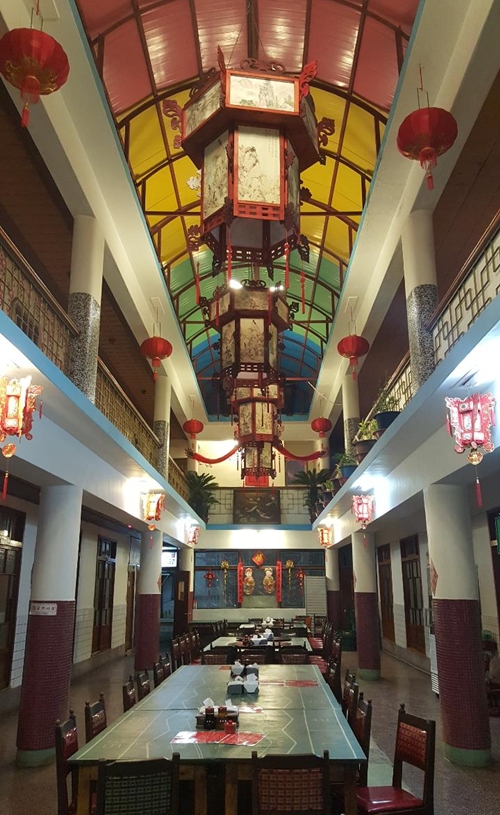
Gunsan's famous Chinese restaurant added to cultural properties list
By Kang Gahui and Kim Young Shin
Binhaewon, the oldest Chinese restaurant in Gunsan, Jeollabuk-do Province, has become an officially registered cultural heritage site.
On Aug. 6, the Cultural Heritage Administration (CHA) announced that it added seven early-modern buildings built between the 1930s and the 1960s to its list of registered cultural heritage sites.
Binhaewon, now registered as national cultural heritage site no. 723, was opened by Chinese-Korean Wang Geun-seok in the 1950s. It later moved to its current location in 1965. The building was expanded in the 1970s.
The two-story building, made from reinforced concrete and bricks, has an open hall decorated with traditional Chinese lamps and a colorful ceiling. The building was also the filming location for the films “Tazza: The High Rollers” (타짜) (2006) and “Man in Love” (남자가 사랑할 때) (2014).
It is very rare for a restaurant that is still in business to become a cultural heritage site.
The CHA explained that the building shows the influence of Korea's ethnic Han Chinese communities that settled in Gunsan and other western port cities in the early-modern era, and that the physical condition of the building is quite excellent.
The other six newly-registered cultural heritage sites are: the old Jeonju district court, Gunsan branch, official residence; the building that housed the old Namjoseon Electric Company; the old company housing block for the Joseon Shipping Company; the Waegwan Catholic Church in Chilgok-gun, Gyeongsangnam-do Province, which was designed by German priest Albin Schmidt in 1966; the old main building of the Chonnam National University Medical School; and the old Gyoha-myeon Town Office in Paju, Gyeonggi-do Province.
kgh89@korea.kr
Most popular
- Grammy-winning producer calls Suga of BTS 'amazing artist'
- 'Universal love, family' themes fuel success of 'King of Kings': director
- Council sets minimum hourly wage in 2026 at KRW 10,320
- Expansion of foreign app system raises tourist convenience
- Nat'l population diversity rose nearly 8% from 2018-22: study
